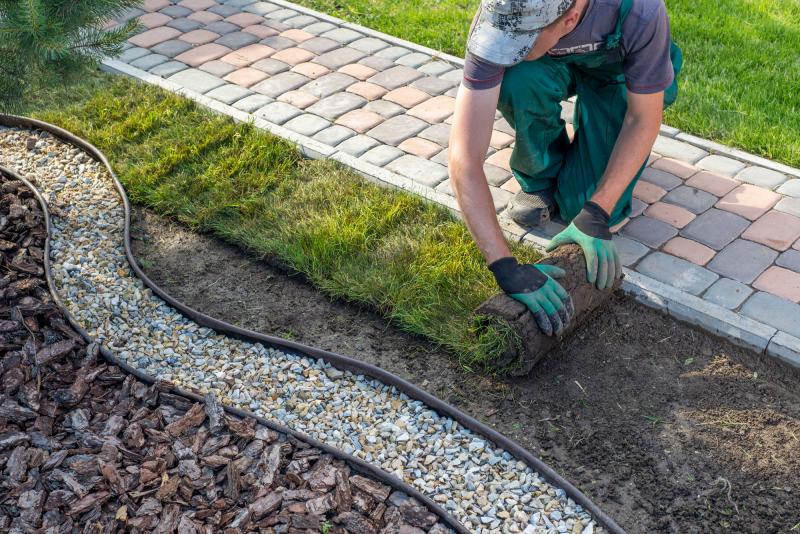Stormwater Quality for Landscaping Businesses
Best management practices
Thank you for taking the time to review and apply Best Management Practices (BMP) for stormwater quality in our community.
Through education and steadfast improvements, we can protect our rivers and preserve our local fish and wildlife.
Material storage
- Store all containers holding powder and liquid materials under cover to protect
- from rain and snow.
- Use secondary containment devices or construct dikes/curbs to contain any possible leaks.
- Keep containers closed and secure.
- Store soil and mulch piles in contained areas where they cannot be washed into the storm drainage system. When these materials are transported for use on site, store them on the lot and out of the street where they won’t be washed into the street and storm drain system with overspray from irrigation or stormwater.
Fertilizers, herbicides and pesticides
- Whenever possible, use chemical alternatives, or low-toxic chemicals.
- Follow manufacturer’s recommendations for safe use and disposal.
- Use the smallest amount necessary.
- Apply at optimal times for the specific application.
- Never hose down streets or sidewalks to clean. Use a broom and properly dispose of sweepings.
- Collect grass clippings as these can end up in storm drains and also create maintenance issues with detention ponds.
Equipment maintenance
- Inspect vehicles and equipment for leaks regularly. Fix problems as soon as possible.
- When draining fluids, use a drip pan and/or funnel to prevent any spills.
- Keep a cleanup kit of safety equipment and absorbent material, such as kitty litter or sand for spills.
Cleaners and solvents
- Read labels carefully and follow directions.
- Dispose of unused portions properly.
- Follow good cleanup practices.
- Whenever possible, purchase water-based cleaning products. Look for products labeled “nontoxic,”“non-petroleum based,”“ammonia-free,”“phosphate-free,” and/or “readily biodegradable.”

